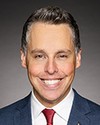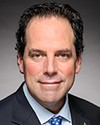I'll preface my next question by stating—and I apologize for being repetitive—that this is why we're here. Putting the politics and the partisanship aside, we're here to get the job done. Regardless of where or what side of the table those concerns come from, the expectation is that the testimony that's received by the analyst comes back in a report, and with that it moves on to your team, and then the minister responds with the recommendations from what we then hear from the witnesses' testimony. Again, the reason we appreciate so much your being here directly is that in that way we can hear first-hand some of those concerns and some of those issues.
My last question, and I'd like to give you some time for answering, is with respect to what I brought up at the last meeting about trying to leverage, I guess, a whole-of-government and all-in approach to transportation in the north. Yes, we're talking about air, but there's also the possibility of multimodal and intermodal services for the movement of people and goods. Of course, I say “leverage”, because it's the same cost, the same method of transportation that might be accrued over time based on what's available in those individual jurisdictions.
Again, can we expect, when we get the recommendations back from you, based on what you hear from us, that it's not just going to be about air, but the possibility of leveraging those capital and operational expenditures to include an all-in approach to moving people and goods so that, as Mr. Davidson mentioned earlier, we'll also see efficiencies based on the transport of not just people but also goods, such as food, into the north?





